Elizabeth Chai Vasarhelyi and Jimmy Chin on Photographer, Nyad, and Free Solo
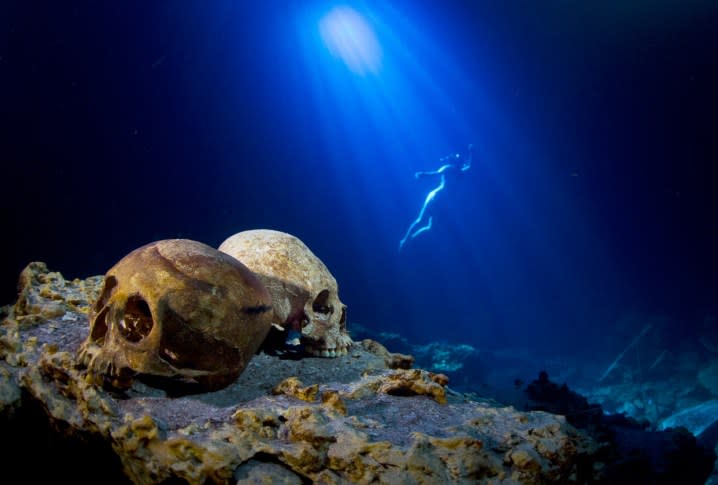
- Oops!Something went wrong.Please try again later.
- Oops!Something went wrong.Please try again later.
- Oops!Something went wrong.Please try again later.
- Oops!Something went wrong.Please try again later.
- Oops!Something went wrong.Please try again later.
If anyone deserves a break from work, it’s Elizabeth Chai Vasarhelyi and Jimmy Chin. The married couple has been making critically acclaimed documentaries for nearly a decade. Their films include Meru, a climbing doc about a trio’s attempt to summit Meru Peak; The Rescue, an exploration of the 2018 Tham Luang cave rescue; and Free Solo, their Emmy- and Oscar-winning documentary about Alex Honnold’s free solo climb of El Capitan. Vasarhelyi and Chin even found the time to make their first narrative film, Nyad, a biopic about Diana Nyad’s swim from Cuba to Florida.
While Vasarhelyi and Chin admit they know how to “catch their breath,” the duo consider themselves lucky to be filmmakers, so their strong work ethic will continue. Vasarhelyi and Chin’s next project is Photographer, a documentary series that takes fans behind the lens of some of the world’s most famous visual storytellers. Each episode spotlights a different photographer: Dan Winters, Campbell Addy, Krystle Wright, Muhammed Muheisen, Anand Varma, and the team of Paul Nicklen and Cristina Mittermeier. The series traces the origins of each photographer while highlighting their insane skills and showcasing their current passion projects.
Vasarhelyi and Chin spoke with Digital Trends about their excitement for the series, the challenges of directing Nyad, and if they could ever see Free Solo being made into a narrative film.
Note: This interview has been edited for length and clarity.
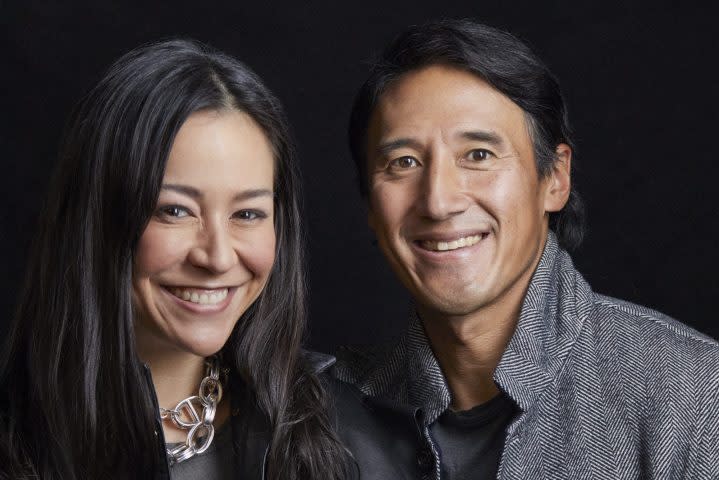
Digital Trends: Have you had a chance to catch your breath after these last few months?
Jimmy Chin: Yeah, we’re pretty good at that. Well, maybe not.
Chai Vasarhelyi: I mean, it’s a good question. I think we’re really lucky that we really like what we do. We also really like our kids, so it’s like always happening. You can’t complain, especially … I don’t know. We feel lucky.
Nothing wrong with staying busy. Jimmy, we spoke about Edge of the Unknown a few years ago, and you told me that your Oscar was in the garage and that you planned to move it someday. So I have to ask, is it still in the garage?
Chin: It is still in the garage. I actually haven’t checked in six months. I hope it’s still in the garage.
We have to get you another one to pair with it.
Vasarhelyi: Mmm. That’d be very nice.
For Photographer, you directed Cristina [Mittermeier] and Paul’s [Nicklen] episode about ocean conservation and their voyage to the Bahamas. What about their story stood out as the one you wanted to direct?
Vasarhelyi: Well, we’ve always wanted to tell their story. I mean, it’s interesting. It’s a love story. It’s a story about a working couple like us. You know, Paul is easily the single most iconic big fish photographer. [laughs] I mean, like a wildlife photographer. And Cristina is just a total inspiration. She’s spicy. She’s brilliant. I mean, this whole idea that she first had one life as a young wife to the head of the Nature Conservancy and had three kids. And then began taking photos, like Christmas cards in her neighborhood. Then, found the love of her life later in life, and …
Chin: That story is so awesome.
Vasarhelyi: Also used her position as a mother, to gain access to communities and photograph things that most people, because of the way the world works, would overlook. So we are huge fans of the work. The inspiration for the series really was more people take photos than necessarily cook their own meals or something, you know? Let’s not forget you’re seeing it through someone else’s eyes. You’re seeing a point of view and that takes great craft. It allows us great access to other worlds.
Chin: And Paul, he’s a peer and a colleague. I’ve been infatuated for a very long time about how, as a photographer, he gets his images because I know how challenging it is.
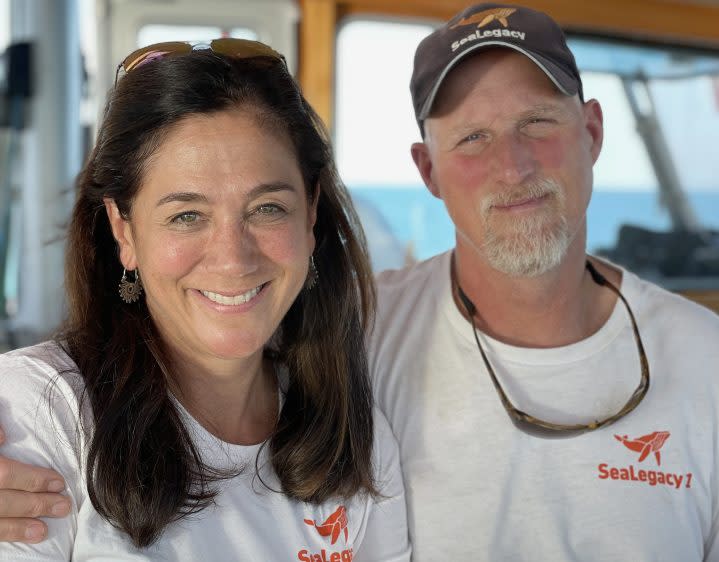
I’m sure you guys picked up on many things by spending time with [Mittermeier and Nicklen]. Is there one or two things you learned from them that you can now implement in your process?
Vasarhelyi: I think there’s an open-heartedness to Cristina and a commitment, like a dogged commitment, to bettering our world, which is not dissimilar to us, but it’s a great reminder. It’s inspiring. It’s not looking so great for the environment right now, but they still care, and they still are willing to do everything in their power.
I think that inspires me and gives me hope. I also love how they delight in one another, like how Paul is Cristina’s greatest champion. How Cristina pushes Paul, and they have a really beautiful relationship. It’s amazing to see that as both a creative, as well as a personal relationship.
I like how they ended [the episode] by saying there’s no retirement for us. They’re just going to continue doing this until they can’t anymore.
Vasarhelyi: Yeah.
Chin: They’re artists on top of everything else. It’s a calling, and photography is a calling. Trying to save the planet is a calling for them. So I don’t think they will ever retire.
Vasarhelyi: I think something I also learned from Paul, from my very early meetings with him, was that he’s uncompromising, and he bucks the system. It’s more like he will define his own terms. He’s always been singular. What’s amazing is Cristina arrived into the genre later, and he expects the same of her. He’s like, “You’re just as good, if not better.” I think there’s something incredible about the two of them.
How did you determine the rest of the lineup for the series?
Vasarhelyi: I mean, it was an embarrassment of riches. There’s so many incredible photographers. I think it was really important for us to have a broad kind of … to highlight many different types of photography and the singular individuals behind it. We also were very committed to getting some of the best nonfiction directors around to work with them and allowing each one of those directors to forge their own way with that photographer and tell their own story.
So you’ll see that all the episodes are slightly stylistically different, but also very appropriate to their subject matter. We were very committed to also presenting diversity … in terms of gender and color and place, points of view.
Photographer | Official Trailer | National Geographic
I like how you learn what makes these photographers tick and what they’re willing to do to push themselves beyond their limits. I was wondering for both of you, what are your reasons for continuing to push yourself and see what you can do?
Chin: I think for Chai and I, I don’t know if it’s in our DNA or something [laughs], I think we’re always looking to challenge ourselves creatively. For me, it’s also physical. I still climb a lot. It’s also just building upon our experiences. You learn so much with every project and in life, so you’re constantly parlaying that to further the craft and what you’re doing.
Vasarhelyi: I think, for me, if you’re going to do it, you might as well do it the best way you can. Otherwise, it’s really fun to hang out with our kids, you know? [laughs] Also, the intellectual or artistic challenges are really enjoyable. It’s fun when you’re stuck, and it’s really invigorating or inspiring to be able to work with other creatives to find your way through problems.
I think our films are all very different, even though they may look at similar themes or questions. Craft-wise, they’re quite different. And that’s always been kind of exciting for us.
You’re coming off a narrative feature that you directed, the Oscar-nominated Nyad. What was one of the biggest things you learned from directing a narrative feature that you can apply to your documentary work?
Chin: I almost feel like it’s the other way around. We were able to take all these things that we’ve learned as filmmakers in the documentary world and apply it to the narrative world. But I think a lot of the same rules apply in terms of how we approach storytelling, and the things that we focus on in terms of character, and the ideas that we want expressed. I don’t know, what do you think? [turns to Chai]
Vasarhelyi: I think it’s a few things. One, what I took away from making a narrative feature is that they’re actually not that dissimilar [to documentaries]. It made me think that the instincts you use in docs are exactly the same instincts here. It was a nice recognition of how difficult making a good nonfiction film is because you don’t have the flexibility of a fiction film where you can’t write yourself out of a problem.
What’s hard is to go back after being exposed to it is the resources you have in fiction. Sometimes I ask myself, “Wouldn’t that be amazing if you had a $15 million VFX budget on a nonfiction film?” It’s actually kind of amazing the ways you can grow or be superpowered creatively because of the resources available. Like, we can change things really fast because you’ve got a lot of editors in fiction.
The other thing was that in Nyad, we had partners in our actors who are the best at what they do, who are as committed as we are to bringing those characters to life, and it didn’t feel as lonely.
When going back now to nonfiction, it’s different. You carry that alone. You’re not asking your participant to necessarily think about how to make themselves more real. [laughs] Like, you can’t do that. There’s a wall there. You’re not supposed to. That’s unethical. So that was a difference.
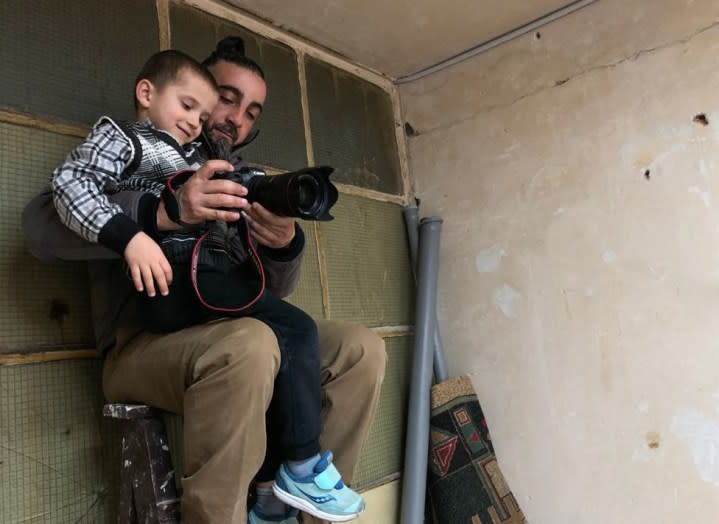
I’m sure it also helped that you were shooting an extreme sports athlete, even though the water brings even more challenges.
Vasarhelyi: You know what? I think I figured out something that happened. I think that Jimmy and I understand our partnership much more clearly after making a fiction film. We’ve always had it unspoken, like the things we do. And suddenly, when you have 400 people reporting to you and everyone scrutinizing you and all the stuff, it had to become more defined because there was more to do at every given moment.
You don’t have the three years we take to make our docs. And I think that will be very good for us when we are working in nonfiction moving forward, because we kind of understood each other on a different level, like our partnership group.
Have you been approached to do another narrative feature?
Vasarhelyi: Sure. It just has to be the right one.
Inevitably, someone from Hollywood will call and try to make Free Solo into a feature film.
Vasarhelyi: You can’t. [smiles]
I hope it doesn’t either.
Vasarhelyi: I don’t … No, you can’t.
Chin: It’ll never feel as real.
It just wouldn’t feel the same. I totally get it. How could you recreate the wall? Just Alex and the wall. I challenge any regular director to do that.
Vasarhelyi Yeah, I would agree. Like, it’s El Cap. You can’t.
Chin: Yeah, maybe … But you know the stakes. If you’ve already felt it when the stakes were actually real, it’s hard to recreate those types of stakes.
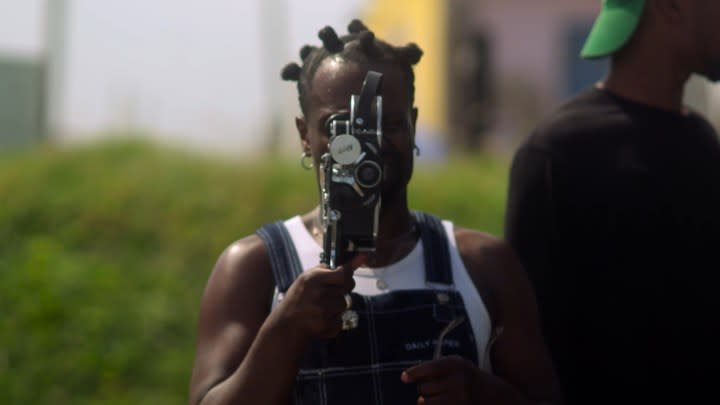
What’s lined up next?
Vasarhelyi: Well, we’re really excited about the Photographer launch. This has been a dream for us to make the series. It’s amazing to see it finally come to fruition. We have a few docs that are kind of on the horizon, so you’ll be seeing something from us soon. I don’t know, working hard on all of our work. [laughs]
Well, I hope you get another break soon.
Vasarhelyi: That would be nice.
Photographer premieres March 18 on National Geographic at 8 p.m. ET and streams the next day on Disney+ and Hulu.

